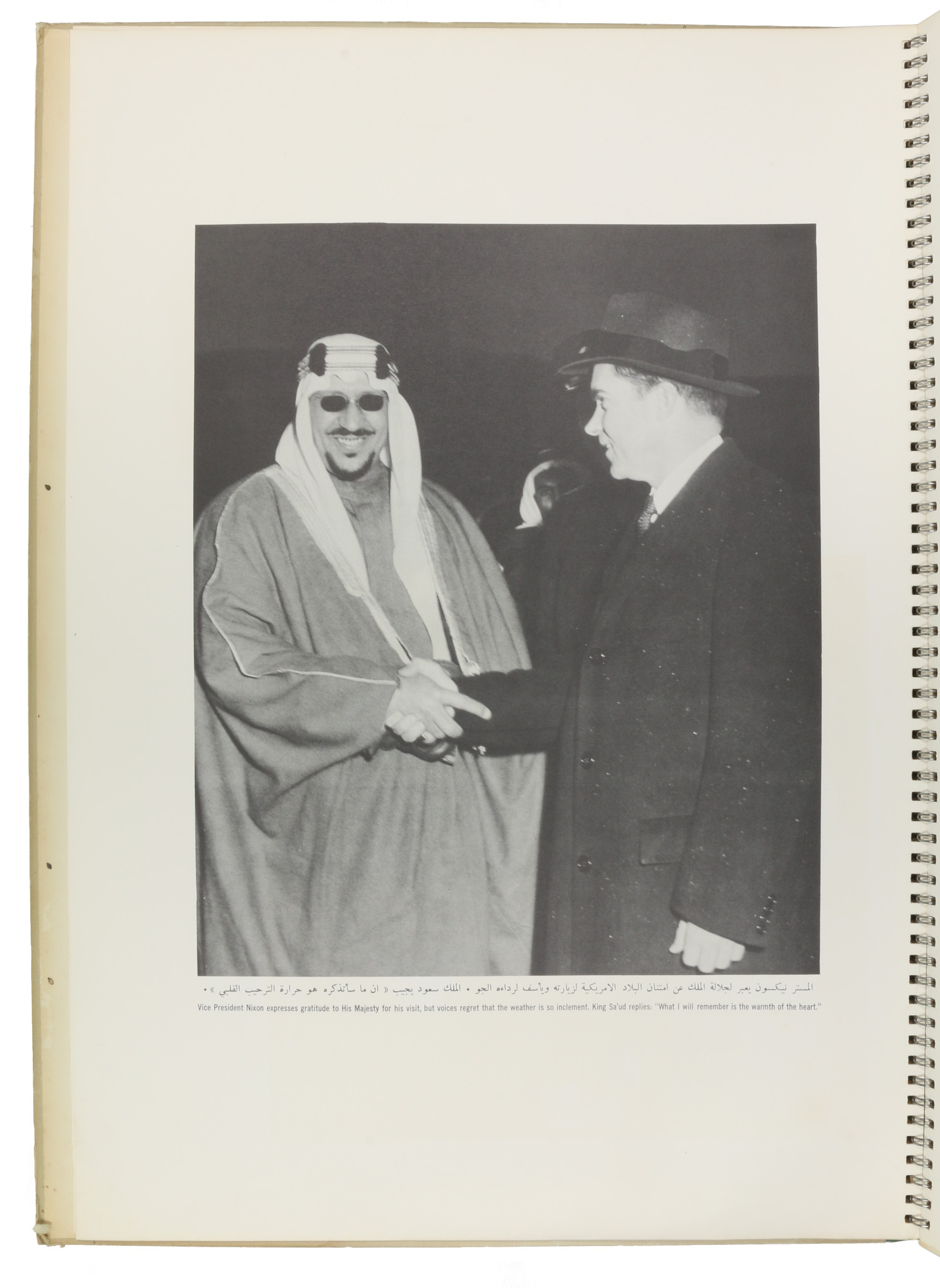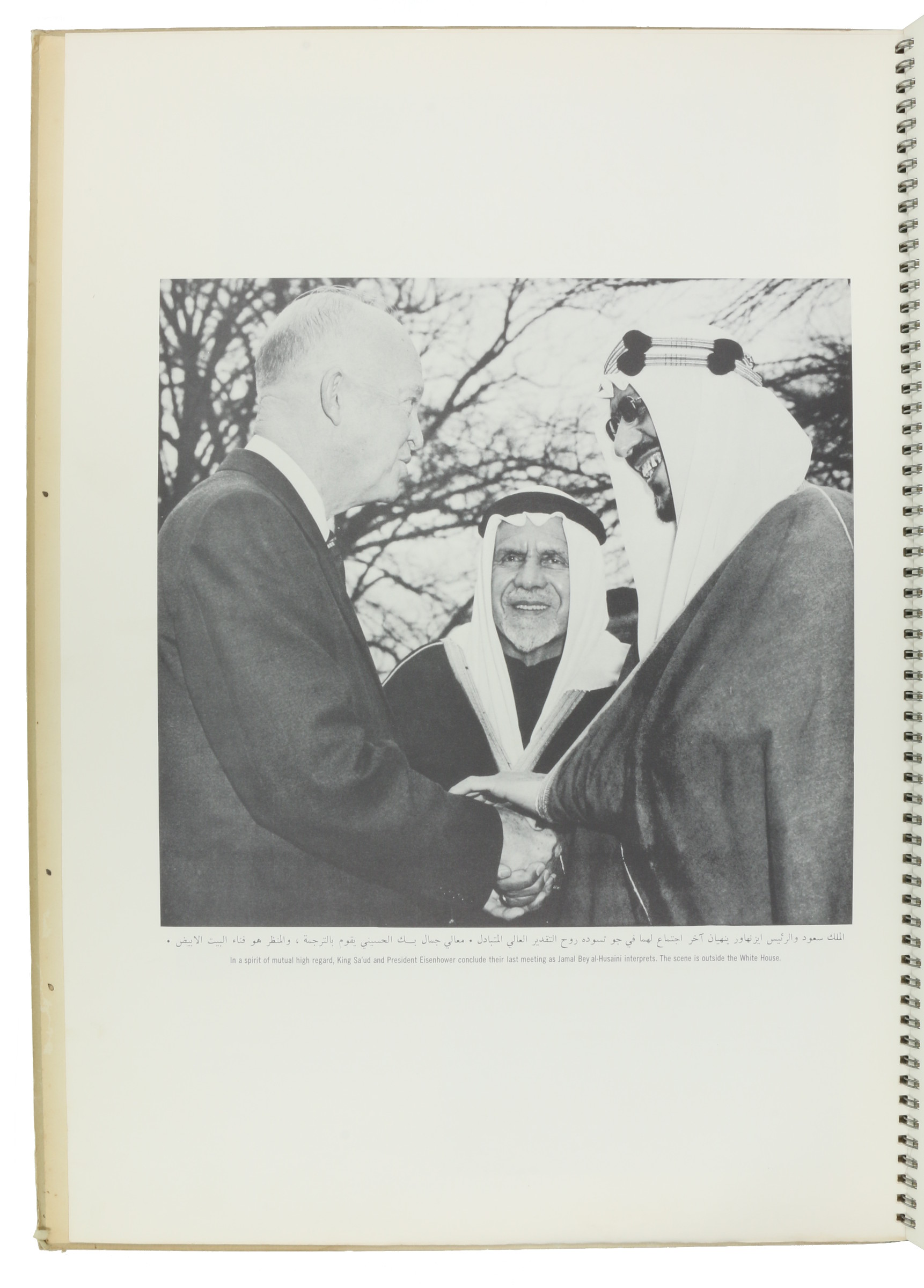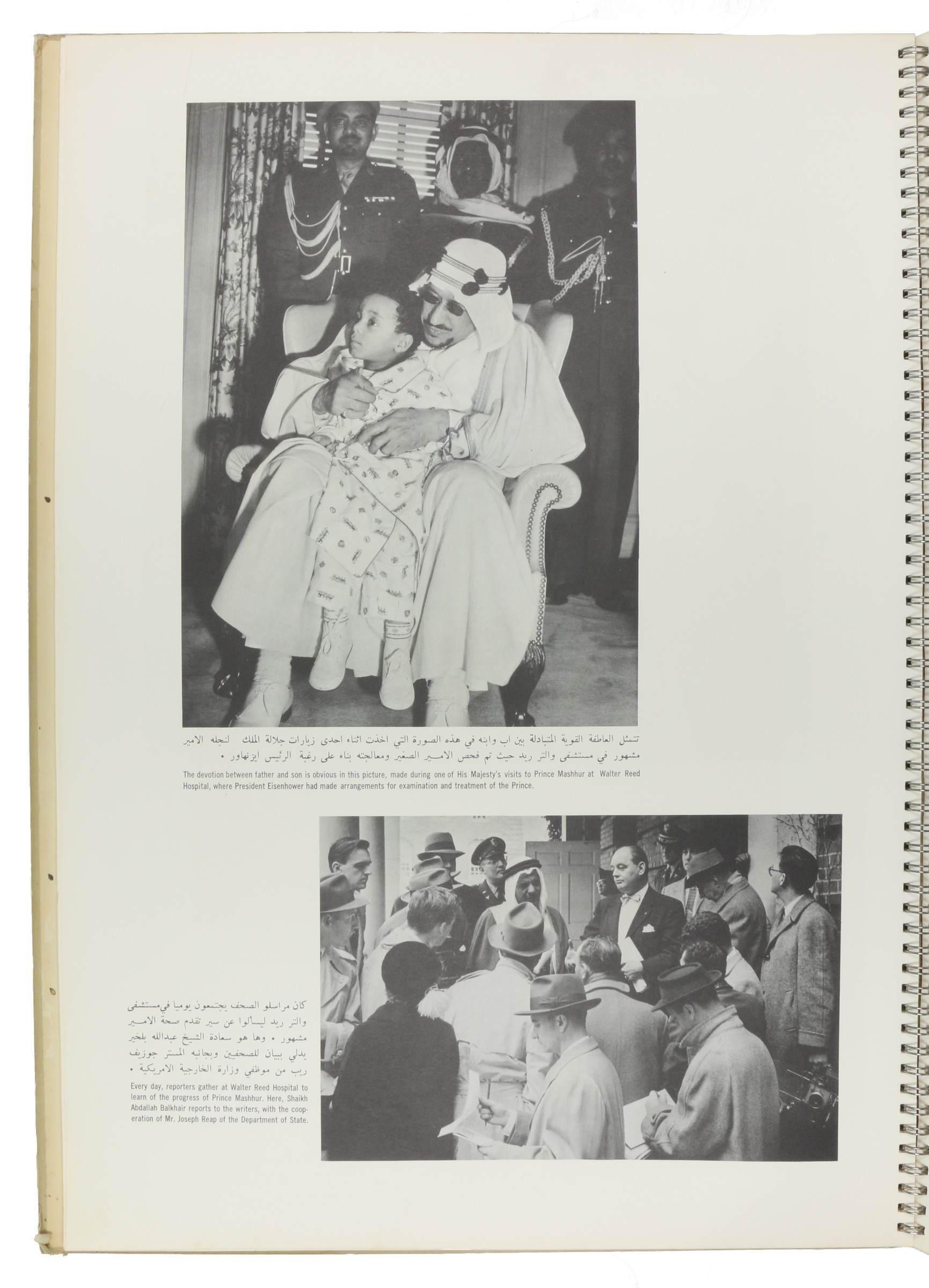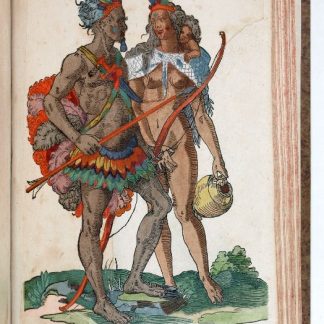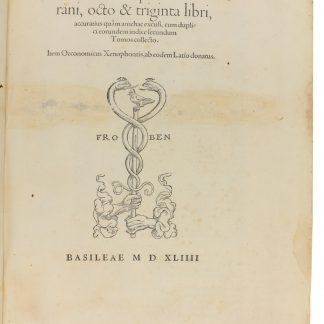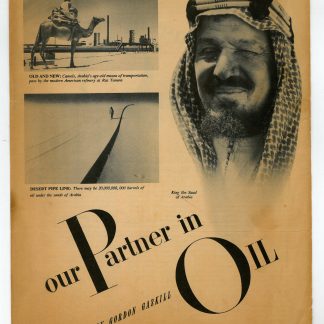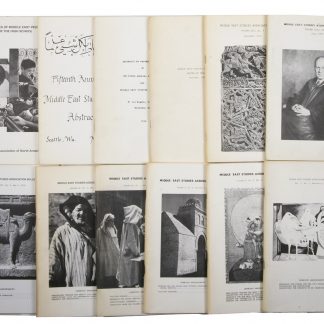[SOLD]
This item has sold. We are always interested in acquiring another copy or any item of comparable quality.
King Saud in America
The picture story of a memorable visit to the United States by His Majesty King Saud.
Folio (358 x 510 mm). Spiral bound within original green cloth-backed printed buff boards. Profusely illustrated from black and white photographs, text and captions in Arabic and English, title-page and section titles (printed on coloured washi paper) in Arabic alone.
Only edition of this commemorative pictorial souvenir of King Sa’ud ibn ‘Abd al-’Aziz Al Sa’ud’s official visit to America. Extremely uncommon: only ten locations on OCLC, all in the U.S.
"The following pages present a photographic portrayal of the visit to the United States of America by His Majesty, King Sa’ud ibn ‘Abd al-’Aziz Al Sa’ud at the invitation of President Dwight D. Eisenhower. The visit was prompted by the earnest desire of the two leaders, as men of peace and honor, to agree upon programs and policies which would foster harmony among nations, and serve the well-being of peoples [...] His Majesty and his party were in the United States only eleven days. But, these were busy, fruitful days, from the morning of January 29, 1957, when a squadron of United States Air Force jet aircraft flew out to sea to meet the liner Constitution, until the morning of February 9, when the President’s personal airplane soared away from Washington National Airport [...] The camera has recorded the highlights of the memorable visit: the full military honors accorded to King Sa’ud upon his arrival in New York, the unprecedented personal welcome by the President in Washington, the meetings at the White House, the conferences with Secretary Dulles and other officials, the discussions with diplomats and statesmen of the Arab countries, the expressions of hospitality - these and other events [...]".
The other officials and dignitaries referred to included Richard Nixon as Vice President, Secretary of State, John Foster Dulles, Charles E. Wilson, Secretary of Defense, Dag Hammarskjöld, Secretary General of the United Nations, Krishna Menon, India’s permanent representative at the UN, Abdul Khalek Hassuma, Secretary General of the Arab League, Crown Prince Abd-al-llah of Iraq, and the UN General Assembly, and Dr. Ahmad Husain, the Egyptian ambassador. Sa’ud’s trip included visits to the Naval Academy at Annapolis, Arlington Military Cemetery, the Washington Islamic Center, and a banquet hosted by Fred A. Davies, chairman of Aramco. While the king had also brought his son for medical treatment at the Mayo Clinic, the visit was foremost a key element in America’s political manoeuvring following the Suez Crisis, designed in large part to prevent Soviet Russia from replacing French and British influence in the region. Sa’ud was persuaded to accept the Eisenhower Doctrine (by which a Middle Eastern country threatened by communist aggression could request U.S. economic or military aid), as well as $250,000,000 towards his defence budget. In so doing, he found himself at odds with the rise of Arab nationalism, and a target for Nasserist calls from Egypt for the removal of the Arab monarchies. Following worsening conflict with his brother Faisal over his indebtedness, and his court’s refusal to keep pace with the modernisation of other Arab nations, Sa’ud was forced to abdicate in 1964, going into exile in Geneva.
Publication is usually attributed to the U.S. government, but the awkwardness of the English, and the care in the presentation of the Arabic captioning and titles, suggest that it may have been produced in Saudi Arabia with American backing - positive spin at home for a less than triumphant diplomatic foray.
Binding slightly bumped at extremeties; some traces of waterstaining to upper cover, more prominent along lower edge (interior virtually unaffected). A fine survival.
OCLC 83248442.

